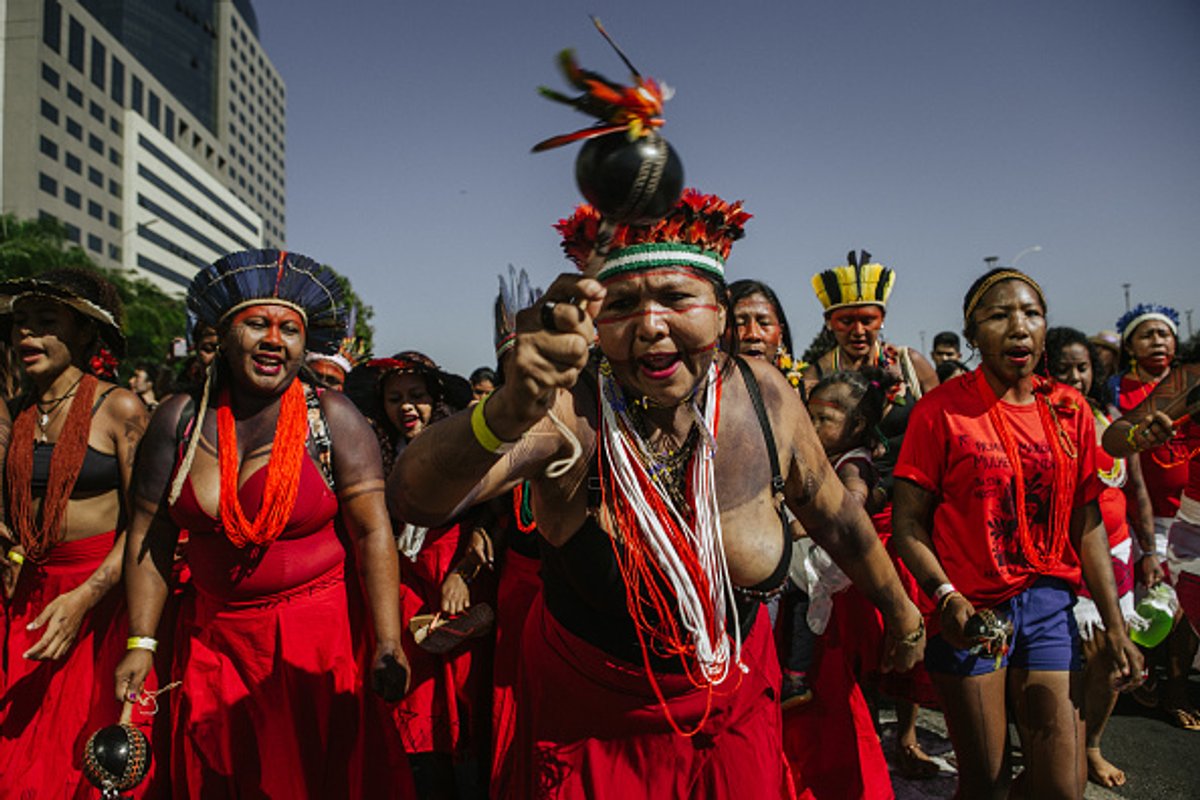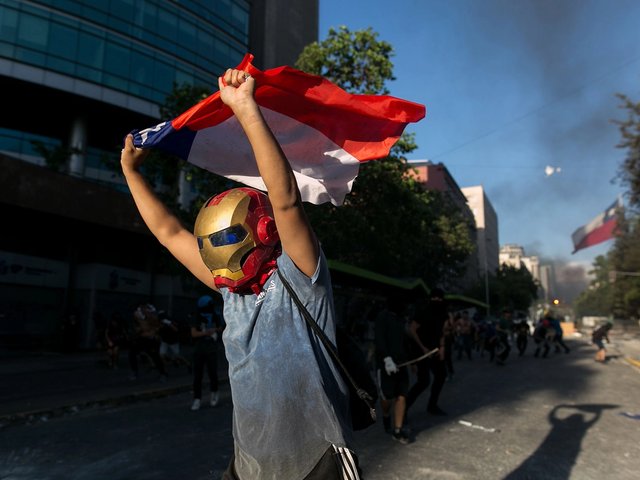On a cold Friday evening in August, the Buenos Aires theatre district was overtaken by hundreds of dancers moving to the rhythm of cumbia, a popular music genre for working-class people in Latin America. Lyrics declared that the president, his neoliberal government, and the status quo were over. Argentinians everywhere posted #MacriYaFue (Macri is done) on social media as news broke that President Mauricio Macri lost in the primary elections. The choreography of the protesters satirised the departing leader’s awkward dance moves during his inauguration, which occurred on the same balcony made famous by Evita Perón.
Artistic expression has become tantamount to the growing protest movements across Latin America. Angry citizens are finding new ways to peacefully oppose their increasingly hostile government policies through cultural art forms, and it should be no surprise. Growing up in Argentina and under a military dictatorship, I know how essential music, art, and storytelling is to Latin American people.
Like many European countries, the arts are almost exclusively funded — and thus defined — by state governments. Populist administrations see culture as a tool for propaganda. Neoliberal politicians deride it as superfluous spending and worthy of a budget cut when austerity measures are needed. Latin American countries, like Argentina and Chile, have enacted such policies, which have affected cultural organisations and universities.
While protesters danced in Argentina, hundreds of indigenous women in Brazil occupied President Jair Bolsonaro’s Ministry of Health to demand that his extreme right-wing government reinstate basic health and human services to their communities. These women, wearing their traditional outfits, peacefully sang and danced inside the facilities, bringing visibility to their communities’ struggle through social media. Even in these dark times, their demonstration was a testament to how the internet has changed how governments interface with dissidents. Protesters are usually met with brutal coercive violence by the police and military forces but nowadays, it is more difficult to “disappear” people. Yes, the ghosts of the 1970s military dictatorships are still present in Latin America’s collective conscious. So too are government efforts to censor and curtail freedom of expression for artists, cultural workers, and students.
Artists are often leading these protests with what has been described as “an intersectional twist”. This summer, Puerto Ricans under the digital emblem #RickyRenuncia successfully overthrew the island’s governor, Ricardo Roselló. Feminists, queers, and working-class families — many still affected by Hurricane Maria — came out in full force against a politician exposed as homophobic and misogynist. Their methods were old and new. Puerto Ricans used plenas, a traditional storytelling genre of music. Queer demonstrators engaged in Perreo Intenso, a marathon of twerking dance-offs. There was also La Renuncia Ball, which featured voguing performers from the newly formed Haus of Resistance. Culture, it became clear, was the weapon of choice for protesters to express their anger, pride, and self-determination.
Likewise, Chileans have combined social media and artistic modes of expression to power their movement against the country’s neoliberal government after it privatised public services and raised the price of public transportation. A YouTube video gone viral depicts hundreds of Chileans, guitars on hand, playing Derecho a la Paz (Right to Peace), Victor Jara’s 1971 resistance anthem to a crowd of students and working-class protesters. Originally composed in the context of Pinochet’s military dictatorship, the song has become the inspiration for demonstrators to take to the streets despite the violent oppression by the police and military national forces.
As I write this article, Bolivia faces a constitutional crisis. A military coup has ousted President Evo Morales from public office, signalling a culture war between the white urban middle class and the rural indigenous working class. The Christian right-wing victory was followed by flag-burning demonstrations on the streets of La Paz where extremists burned the Indigenous Wiphala banner while brandishing their Bibles.
Back in Buenos Aires, cumbia has taken over. People danced in flash mobs, celebrating the results of the general elections. Inherent in all these movements is the claim for people’s right to participate in cultural production. As in the US, we need to create a pathway for cultural democracies that allow the creation of national identities that are equitable and inclusive.
• The writer is the executive director of the Leslie Lohman Museum in New York.



